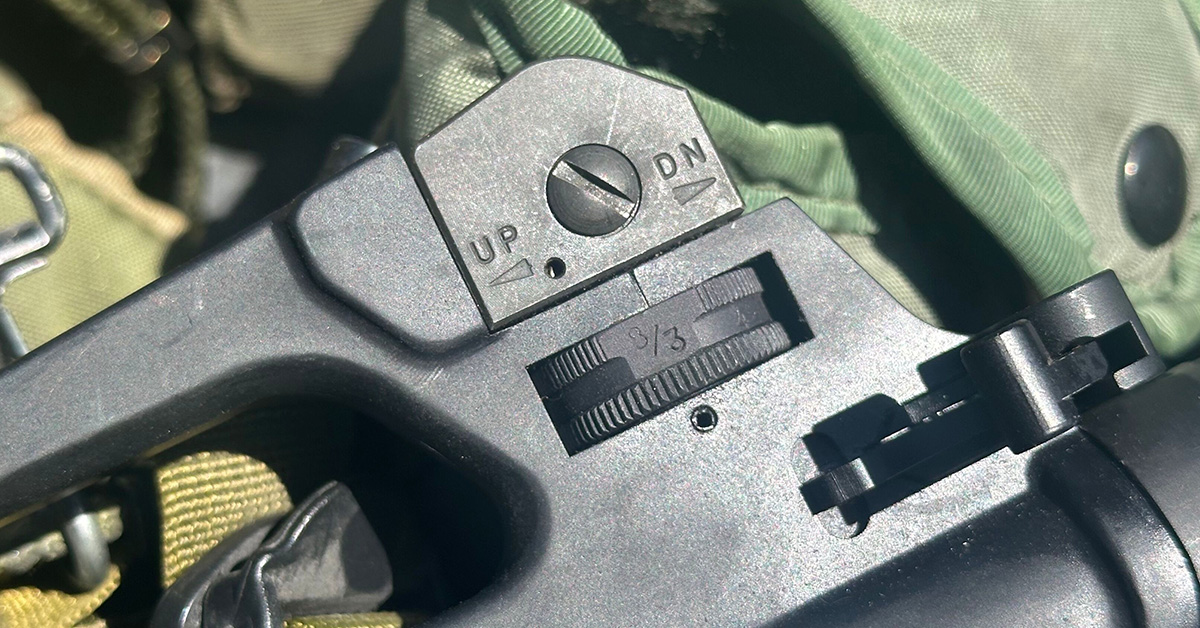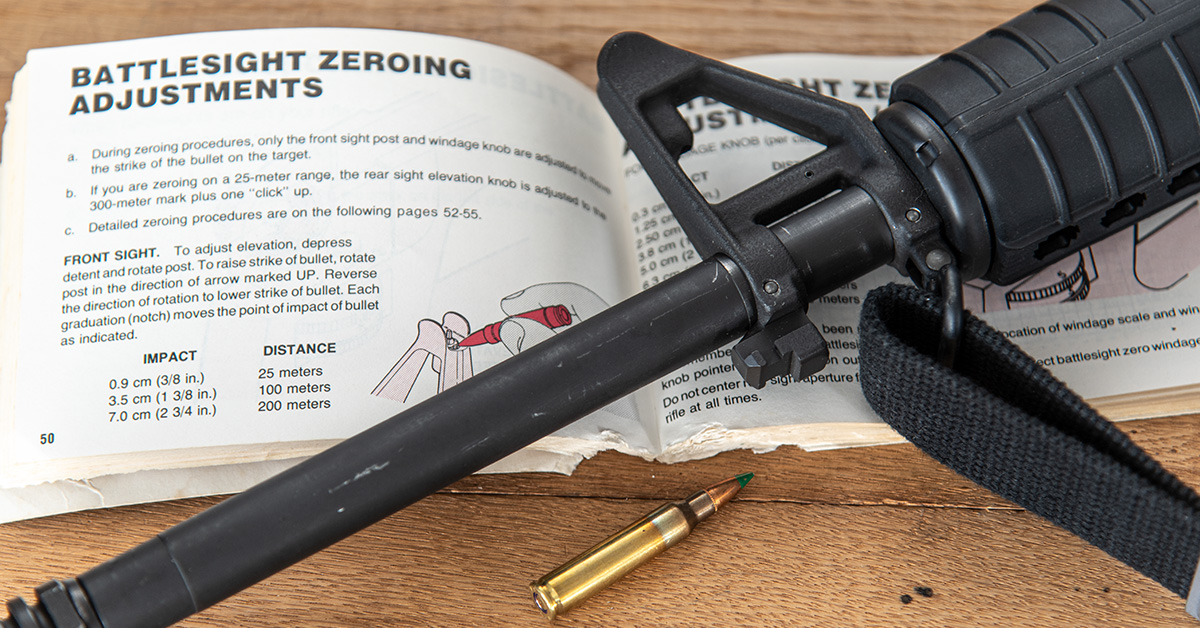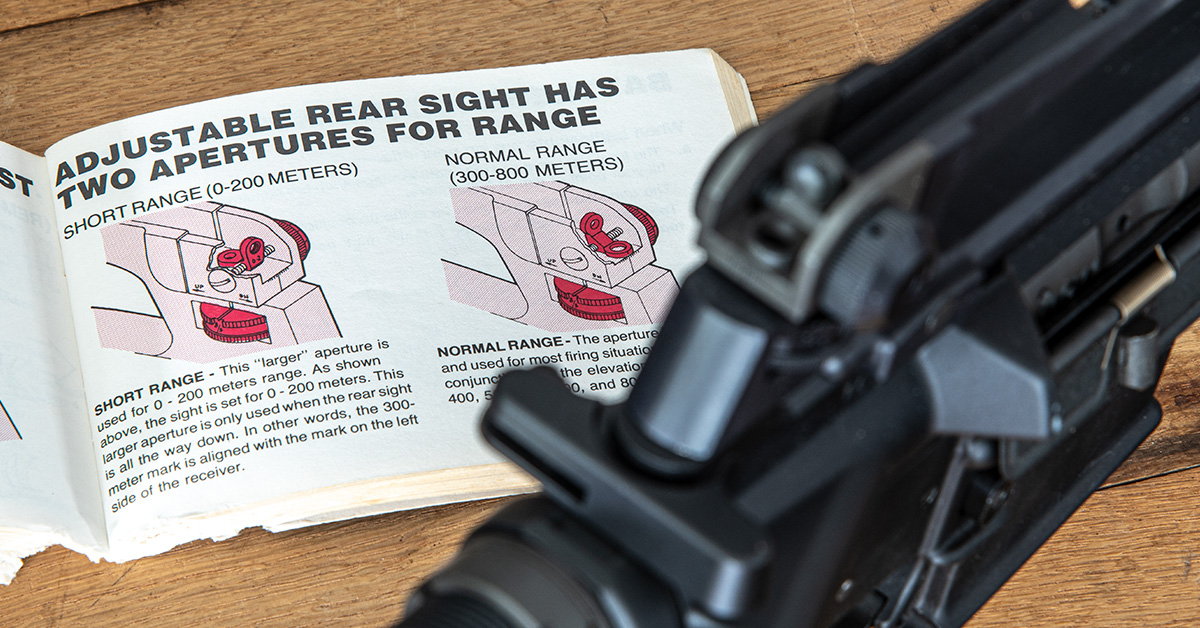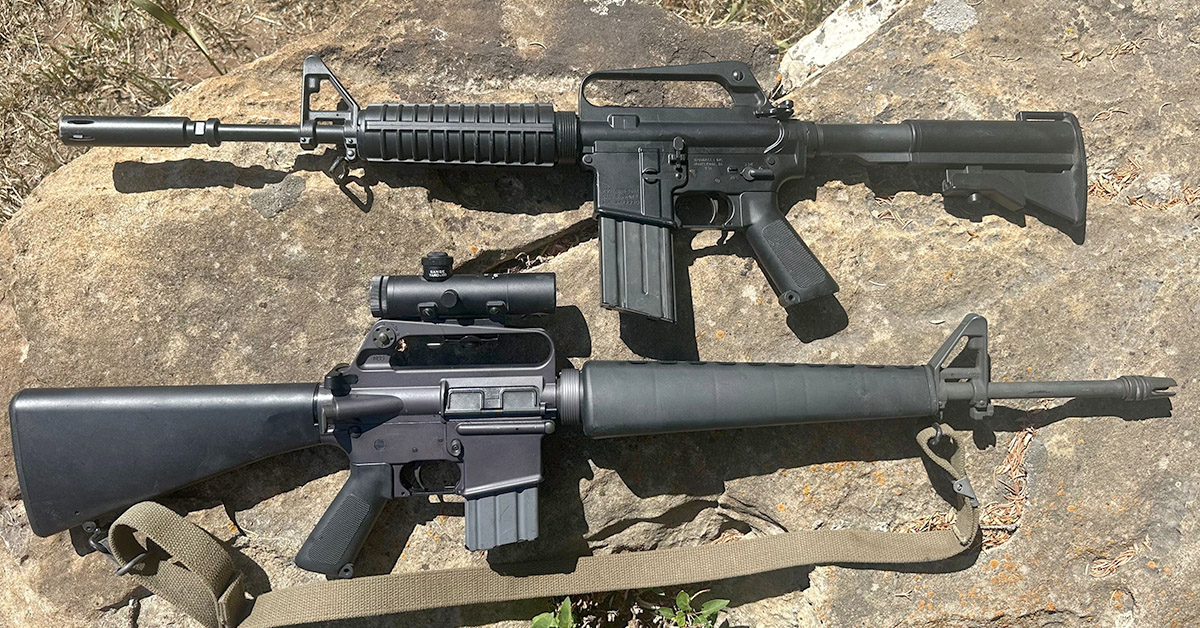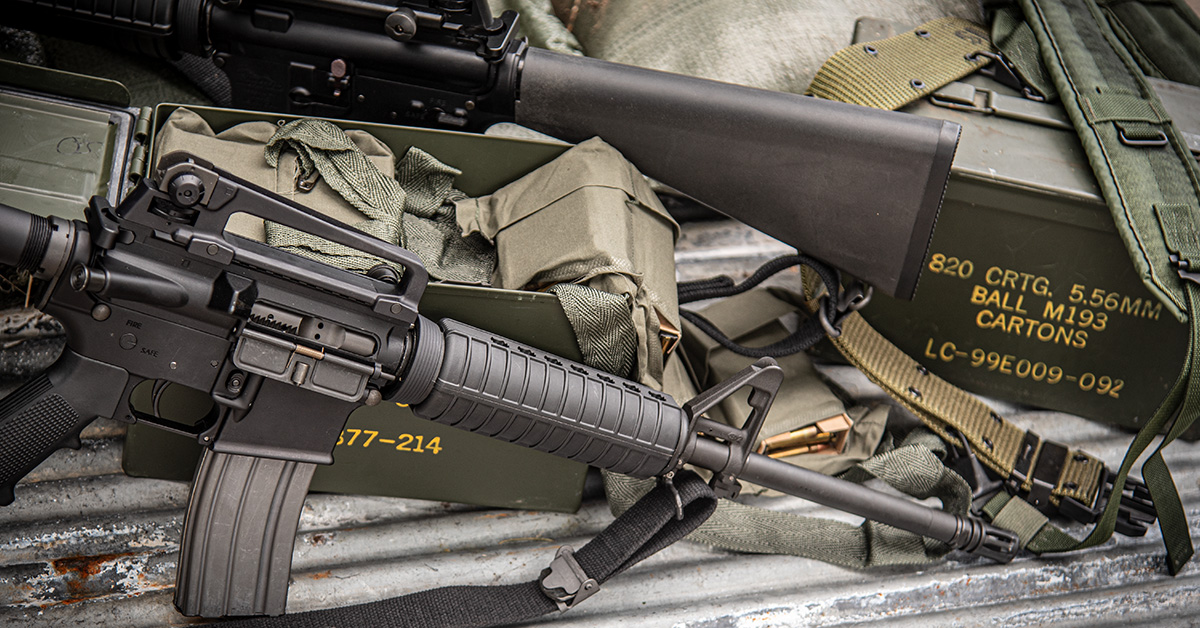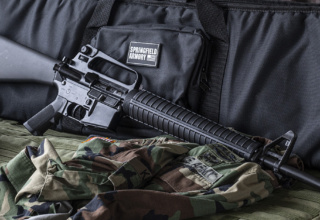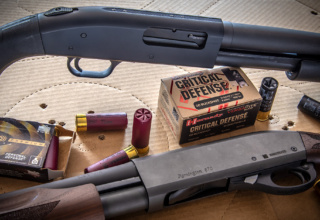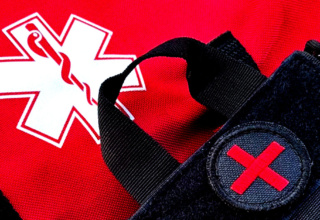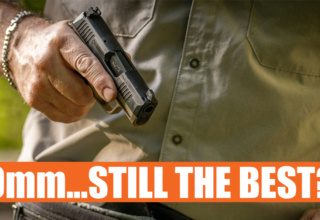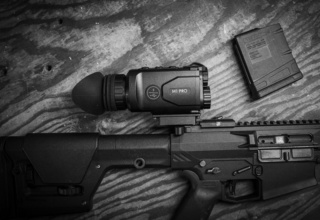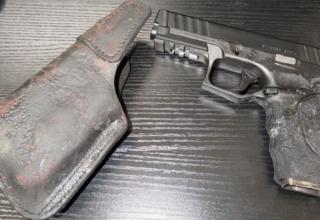Old-school military clone ARs may be the hip thing today, but there’s more to these guns than the obvious cool factor. If you want to build your marksmanship skills and overall firearm proficiency, the classics are your ticket to success.
by Paul G Markel
If you base your belief on direct mail advertising — email, that is — you might think that it is all about the “retro AR” today. Between the new model guns coming from various manufacturers to the “retro parts” being offered by numerous aftermarket makers, the temptation to buy or build a retro AR is all around you.
Nonetheless, just what is it that makes an Armalite Rifle Model 15 variant a “retro” gun? The internal operating system is the same and the manual controls are basically the same on all rifles. What makes ARs “retro” is the use of the original carrying handle (which US Marines were forbidden to use as such) and the “A frame” front sight housing. If you already own one or more ARs, you know how to load and shoot them. The big differences between your modern gun and the old style are the sights and how to zero them.
For the sake of transparency, I learned all about how to BZO an M16A2 on the Parris Island Rifle Range during the summer of 1987. I qualified as an “Expert” with that rifle. My eyes were sharp back then. The Marine Corps adopted the M16A2 rifle in 1983 and the US Army followed suit in 1986. I was actually out of the Corps when I learned to zero the old A1 style rifles.
A1 or A2?
Regarding zeroing the sights on your retro AR, the first thing you need to determine is whether you have the A1 or A2 sight set up.
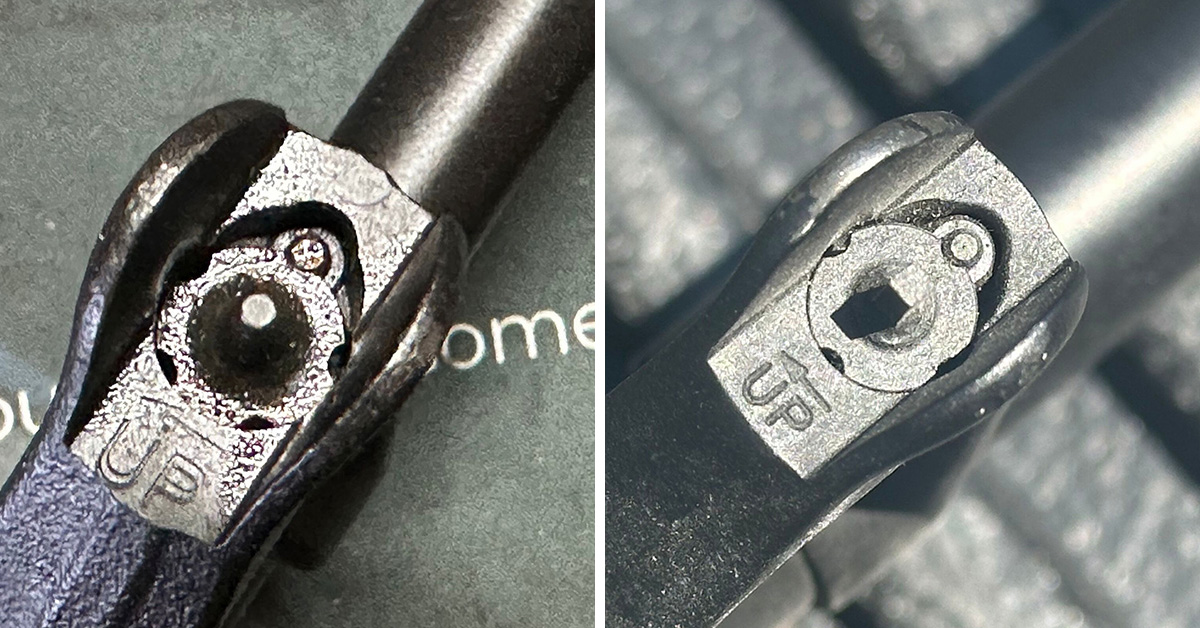
As for the front sights, the A1 style has a round post and a 5-position adjustment. The A2 front sight has a square post and a 4-position adjustment.
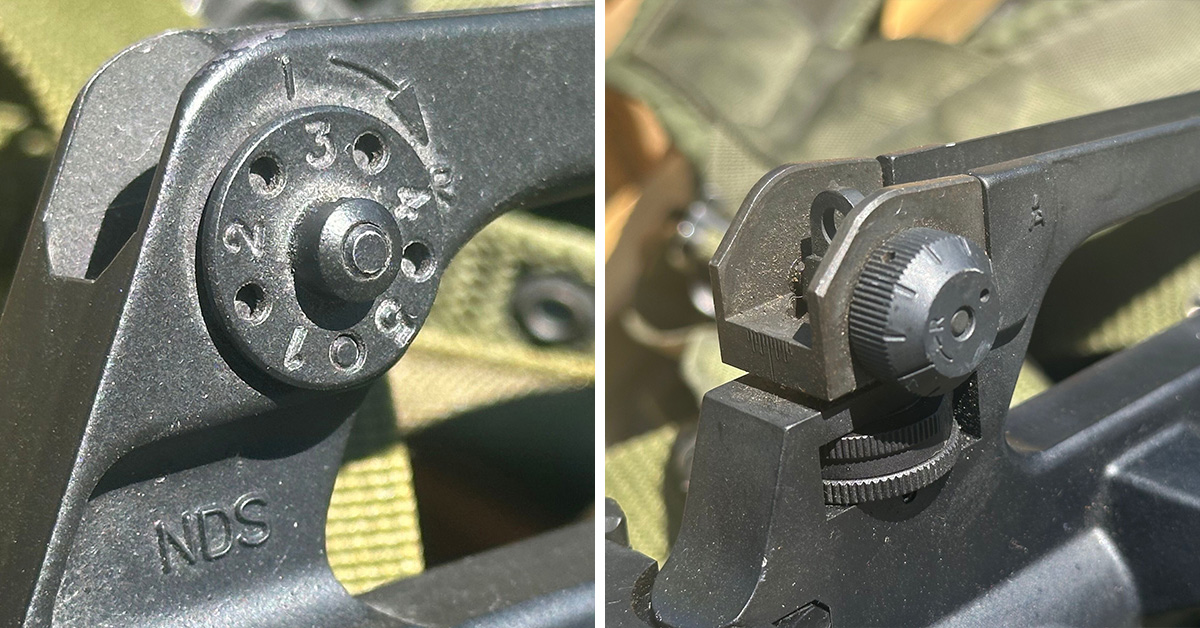
The A1 rear sight is adjustable for windage only and the adjustment “wheel” is located on the right side of the carrying handle. The A2 rear sight is adjustable for both windage and elevation.
There is a windage knob on the right and an elevation “drum” marked either “3/6” or “3/8”. The 3/6 is for 14.5-inch M4s (or 16-inch citizen legal) and the 3/8 is for 20-inch barreled rifles such as the M16A2 or A3 (the A4 was most often equipped with an optic).
Now that you know whether you have an A1 or A2 style sight set up, you can begin your BZO (battlesight zero) process. The official US Army TM 9-1005-319-10 advises that the M16A2 and M4 be BZOd at 25 meters.
Before firing a shot, ensure that your front sight post is “flush” with the front sight housing. This is easily checked by running the tip of a 5.56mm cartridge over it. If there is no bump, the front sight is flush. The rear sight aperture should be centered in the housing. On the A1 rear sights, you will need to eyeball it. With the A2 rear sights, there are lines on the aperture and housing to line up. If you have A2 sights, the elevation drum should be all the way down. Some drums will allow -2 clicks below the 3/6 or 3/8; some will allow only -1. This varies by manufacturer. Dial your drum down -2 clicks if you can.
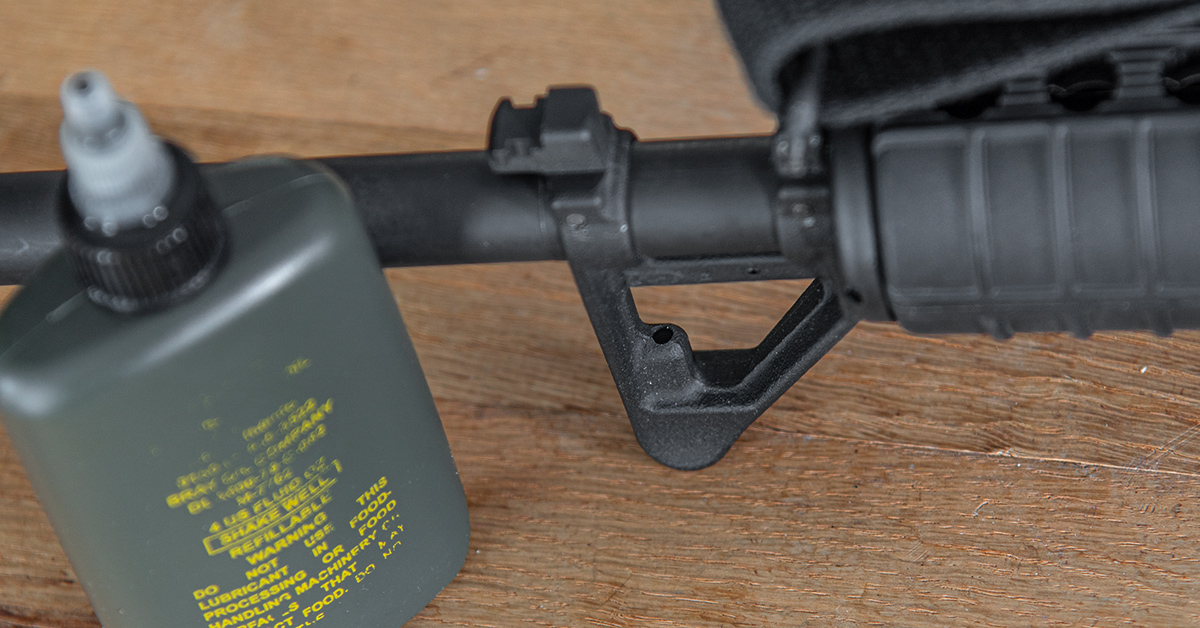
With your target out at 25M, stabilize your rifle on some type of rest, take your time, and apply all the rifle marksmanship principles, then fire three slow-fire shots. Try to make each shot perfect. Hopefully, you will end up with a nice triangle-shaped 3-hole group. If your shot holes are strung out in either a vertical or horizontal line, mark the holes and try it again.
Even with an A2 sight set up, ALL elevation adjustments for BZO are made with the front sight post. Long distance elevation adjustments are made with the drum later on. This is one of the biggest mistakes that neophyte shooters, who don’t read the manual, encounter.
Once you have your tight triangle shot group, you can make adjustments. For the front sight, the “UP” arrow means the strike of the round (the post actually goes down for the round strike to go up). With an A1 front sight, each click is 1/4-inch with a 20-inch barrel and 3/8 inches with a 14.5- or 16-inch M4 barrel. The A2 front sight is 3/8-inch with a 20-inch barrel and 1/2-inch with the shorter versions.
The windage adjustment “wheel” on the A1 is 1/4- and 3/8-inch, respectively, and the A2 windage knob on the A2 gives you 1/8- and 3/16-inch adjustment, respectively, with the 20-inch barrel or the 14.5- or 16-inch barrel. On both the A1 and A2 rear sights, there is an “R” arrow to move the strike of the round to the right.
I understand that for folks who have been zeroing red dot optics for their entire AR shooting career that this can seem a bit strange. Trust the process. It works. Also, Eugene Stoner designed his baby so that only the tip of an FMJ 5.56mm round is needed to make adjustments. They make front sight tools if you feel the need, but you can get the job done using just a cartridge tip.
Long or Short?
As for my retro ARs, I have examples of the long and the short. The long version is a faithful reproduction of the XM16E1 with a 20-inch barrel. Yes, Virginia, before the M16A1 was officially adopted, the XM16E1 was fielded for trials and evaluation. Savvy readers might notice the 3-prong flash hider that worked very well, but the troops in Vietnam did not like it because, as the story goes, the split brake got caught on vines and foliage. The lower receiver on the E1 has a “partial fence” to guard the controls. Also, the E1 had a fixed buttstock without a trapdoor compartment for a cleaning kit. The M16A1 included upgrades such as a chrome-lined chamber and bore, a full fence lower, a trapdoor storage compartment in the stock, and a “bird cage” flash hider. If you don’t have one of the M16 cleaning kits, you should get one.
On the short side, I have another faithful reproduction — this one is the XM177E2. This model has a 12.7-inch barrel with a “pinned and welded” XM177 flash hider for a total length of 16 inches. The XM177 flash hider works exceedingly well as both a flash hider and as a muzzle brake that pushes the noise away from the shooter’s face. True to the original design, the retractable stock on the XM177E2 has only two positions; closed and open. The gun is very light at only 6.5 pounds, and it handles quite well. As an interesting side note, the original Colt Mfg. specs for the XM177E2 listed it as a submachine gun, not a rifle or carbine.
Feeding the Beast
The original AR-15 from Armalite used a 20-round aluminum straight, or box, magazine. This made sense because at the time, all the NATO battle rifles used 20-round magazines. The Soviets, though, changed the game by putting 30-round mags in their AKM rifles. Not to be outdone, Colt and NATO soon adopted the 30-round aluminum STANAG magazines. In the early days of the Vietnam conflict, the 20-round versions were standard, but before that jungle war ended, 30-round versions were being shipped to the theatre. There was also a 25-round straight steel magazine. If you were lucky, you got one of these, because they are now basically “unobtanium.” All the mags — 20, 25, and 30 — can be loaded with ten-round stripper clips using a speedloader, also known as a “spoon” to GIs.
Back in the old days, when you fully loaded the AR-15 magazines, the follower bottomed out, making insertion on a closed bolt very difficult. Hence, the US Army and Marine Corps taught their troops to download mags by 2 cartridges to ensure seating on open and closed bolts. Modern followers now allow just a little bit of play when the mags are fully loaded, so the downloading process is not so much a requirement.
The Stick Shift of Rifles
In addition to the historical significance and nostalgia, running these retro rifles is akin to driving a stick shift car. Yes, it seems antiquated, but it can also be a lot of fun. Also, if you are of the younger generation, these guns give you a feeling of what your fathers and grandfathers had to learn and use in combat.
Back in the day, we Marines used to qualify with our M16A2 rifles out to 500 yards, or meters, depending on the range in question, using only our iron sights. To give you an idea, a full-sized human silhouette target was the same width as the front sight post out at 500. To accomplish such a feat, we were taught to use our slings to give our rifles rock-solid stability. We were never allowed to lay out rifles on barricades or cover. Developing the skill to hit a silhouette at 500 yards with iron sights gave us genuine confidence in ourselves and our rifles.
Retro rifles are both nostalgic and truly enjoyable to shoot. If you have been thinking about getting one, I say, “Why not?” Buy one or build one…you’re an American.

